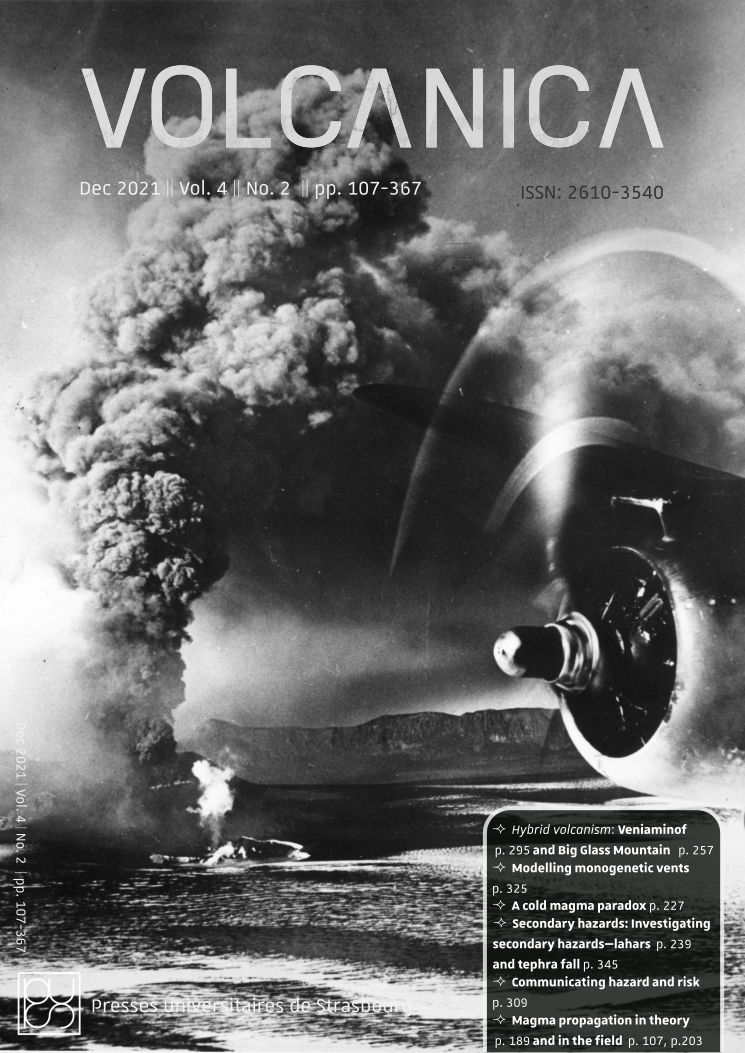Calculating the cohesion and internal friction angle of volcanic rocks and rock masses
Main Article Content
Abstract
Rock failure criteria are key input parameters for models designed to better understand the stability of volcanic rock masses. Cohesion and friction angle are the two defining material variables for the Mohr-Coulomb failure criterion. Although these can be determined from laboratory deformation experiments, they are rarely reported. Tabulated data for volcanic rocks, calculated using published triaxial results, show that cohesion and friction angle decrease with increasing porosity. If porosity is known, these empirical fits can provide laboratory-scale cohesion and friction angle estimations. We present a method to upscale these parameters using the generalised Hoek-Brown failure criterion, discuss the considerations and assumptions associated with the upscaling, and provide recommendations for potential end-users. A spreadsheet is provided so that modellers can (1) estimate cohesion and friction angle and (2) upscale these values for use in large-scale volcano modelling. Better constrained input parameters will increase the accuracy of large-scale volcano stability models.
Downloads
Article Details

This work is licensed under a Creative Commons Attribution 4.0 International License.
© The Author(s).
Submission of an original manuscript to Volcanica will be taken to mean that it represents original work not previously published, and not being considered for publication elsewhere.
The Creative Commons Attribution 4.0 International License permits unrestricted use, distribution, and reproduction in any medium, provided you give appropriate credit to the original author(s) and the source, provide a link to the Creative Commons license, and indicate if changes were made.
Accepted 2021-10-21
Published 2021-11-23





